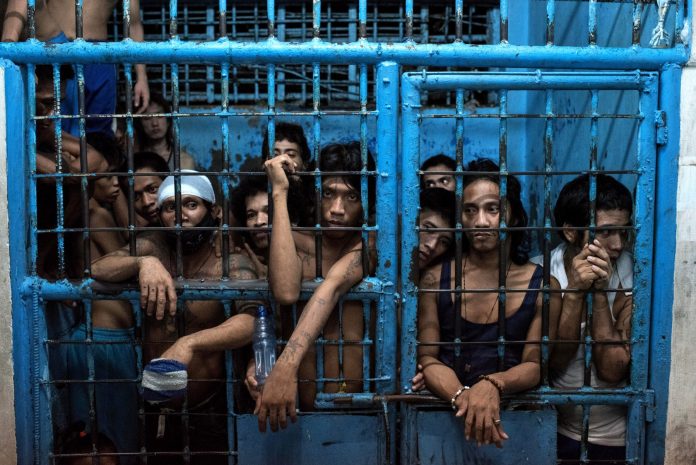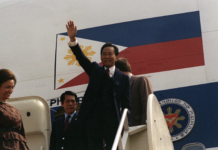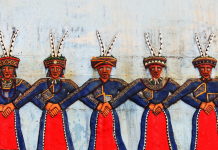
Exposing the controversial history of the drug trade
Text Mangai Balasegaram
After decades of wars and violence, from the Vietnam War to the Killing Fields of Cambodia, peace now reigns across Southeast Asia. Even in Myanmar, war-torn for decades, peace negotiations are underway. But one war stubbornly remains: It is brutal and merciless, backed with the harshest laws and toughest police action, but is nevertheless apparently intractable and unwinnable. This is the drug war.
In the Philippines, since President Rodrigo Duterte took office four months ago, close to 4,000 drug suspects have been gunned down by police and vigilantes. Innocent people and children killed in the crossfire were, in Duterte’s words, “collateral damage”.
Elsewhere in Asia, gunfire on the streets is rare, but drug users still face a catalogue of violence and abuse. The United Nations (UN) has estimated some 450,000 people in China and across Southeast Asia were held without due process in drug detention centres in 2014 and has called for these centres to be closed. According to multiple reports by Human Rights Watch, detainees experience torture, forced labour, sexual assault and routine physical violence.
Punishment, prison, and at worst death, are often used to resolve drug issues. Of the 300,000 prisoners in Thailand, some 70 percent have committed a drug-related crime, the Thai Correction Department says. Drug users also make up the majority of prison populations elsewhere in southeast Asia.
The drug war is ugly. And yet, it wasn’t always this way. “The war on drugs only really kicked off in the 1980s,” says global drug policy expert Martin Jelsma, the Transnational Institute’s programme director. Mass incarceration increased after the 1988 Trafficking Convention, which required countries to increase sentences for drug use, he adds.
Drug policy has changed frequently. In the last 200-odd years, drugs have been a major trading commodity, helped fund an empire, caused wars and were behind the story of Hong Kong. Going back many centuries, drugs were once revered in Asia for their use as spiritual and medical aids. How did drugs go from such an elevated position to the taboo of society?

Ancient Ecstasy
Some 3,500 years ago, the priests of ancient India – called Brahmans – would take a ritual drink called soma.
The Rigveda, a collection of Vedic Sanksrit hymns and one of the world’s oldest religious texts, repeatedly mentions soma. The drug was described as inducing ecstasy and divine experiences, as articulated in this line: “We have drunk
soma and become immortal; we have attained the light, the Gods discovered.”
The identity of soma remains a mystery. Some scholars think that it was a hallucinogenic mushroom, either Amanita muscaria, used by shamans in Siberia, or, as as ethnobotanist Terence McKenna believes, Psilocybe cubensis. Another theory is that it was a waterlily; soma was said to grow on mountain lakes. Academic David Spess says some Nymphaea waterlily species can induce states similar to that from the drug 3,4-methylene-dioxymethamphetamine (MDMA), popularly known as “ecstasy”.
Another ancient drug is opium, which was being cultivated around 3,400 BC in lower Mesopotamia. The Sumerians, considered to be the world’s first civilisation, referred to it as hul gil, which translates as the “joy plant”. Many other ancient cultures also used opium, including the Egyptians, Greeks and Romans, mostly for medicinal purposes and to aid sleep.
In the 7th century, Arab traders travelled far east with opium. By the 1500s, Portuguese sailors were also recorded
as smoking the drug. Opium was well known – and still is – as a pain reliever, as some ancient Indian texts described. But its use was still limited and even prohibited in parts of Asia, such as Ayutthaya, Thailand’s ancient capital. That was all to change after it became a major trading commodity.

“Poison” in Exchange for Tea
In the 1750s, with its own private army, the British East India Company took control of Bengal, then a lucrative region in India producing textiles, spices, dyes and opium. They established a monopoly on the opium trade, controlling operations through contractors.
In China, the Company was buying increasing amounts of tea and silk, to meet demand at home. “The Chinese, however, whilst keen to export tea, really wanted nothing in return except silver bullion,” writes Martin Booth in Opium: A History. The Company had a trade deficit, and opium provided a perfect solution. It was profitable, light, did not spoil and was easily packed. Once addiction set in, there was a steady market.
A prohibition on opium by the emperor did not curb trade. The East India Company set up an elaborate system of exporters and smugglers that included Mandarins in Canton. Ships were often disguised and armed. The trade was so profitable that others wanted to join in, including Chinese and foreign traders. By 1810, American companies held 10 percent of trade in Canton with Turkish opium. That year, the emperor issued an edict bemoaning that opium was a “poison, undermining our good customs and morality”, but again, to no avail.
In 1839, with a few million addicts in the country, the emperor hired a special commissioner, Lin Tse Hsu, to help battle the opium trade. He was intelligent, resolute, competent and incorruptible, Booth writes. He undertook various measures, including arresting dealers, destroying pipes and collecting over a million kilograms of opium from merchants, which he destroyed. He even wrote a letter to Queen Victoria, saying that China was supplying Britain
with all kinds of valuable goods but was only getting “poison” in return.
But Lin underestimated the forces against him. British warships opened fire in Kowloon, and so began the first Opium War. It was settled with a treaty – the “Unequal Treaty” according to the Chinese – which opened up five ports and ceded Hong Kong to Britain. The disgraced Lin was exiled; today, the UN’s day against drug abuse on June 26 commemorates him.
After the war, opium imports doubled. Hostilities grew until another, bloodier war broke out in 1856. China was again forced to make concessions; opium was to be made legal. Further control efforts by the government failed. After the Qing Dynasty fell, gangs and syndicates trafficked opium, which was being locally produced, as was heroin. China was not the only country struggling with addiction. By 1900, every Southeast Asian country had an opium monopoly or an officially licenced franchise, as well as many users.
Global control efforts
Global drug control is a modern phenomenon. The first foray into it was in 1909, at an international conference in Shanghai on opium control. Groups like the Anti-Opium League in China, led by missionaries, were influential. Three years later, a global treaty on opium control was signed at The Hague. The focus was more on regulatory controls than prohibition.
Only after the 1961 UN Single Convention on Narcotic Drugs did the illicit cultivation, possession and trade of drugs become a crime under international law. It allowed for traditional markets to be phased out slowly – by 1979 for opium, and 1989 for coca and cannabis.
Today, global drug policy is in turmoil, with a “dissensus” on prohibition. In April 2016, the UN General Assembly held a special session on drugs. The meeting revealed a deep split: Hardliners such as Russia and China defended the status quo, which remained, while Canada and Mexico declared plans to legalise marijuana. In November, voters in California, Nevada and Massachusetts endorsed the recreational use of marijuana. Other countries in the Americas are expected to follow suit.

The contrast with Asia is stark. Duterte’s brutal drug war follows a similar war in 2003 in Thailand, in which thousands died – many not linked to drugs. And yet, trade routes remained intact. Attempts to control this multi-billion dollar black market trade invariably fail. Drug production is booming in Asia. Opium production in Afghanistan rose 43 percent this year according to the UN, while production in the “Golden Triangle”, namely in Myanmar, tripled over the last decade.
“The drug war could never be won,” says Jelsma. “So it is about time to change the objectives of drug policy: steering the drug market into a less harmful direction, making it less violent and allowing milder substances to circulate more freely than the most dangerous ones.” For example, coca leaf as a mild stimulant could be circulated rather than cocaine. There is enough evidence that decriminalisation works, he says.
The call for a more rational drug policy has intensified among public health advocates. “There is undoubtedly a clear link between current drug policies and the HIV, hepatitis C and, to some extent, the TB [tuberculosis] epidemics,”
says Professor Adeeba Kamarulzaman, dean of the University of Malaya’s Faculty of Medicine, who co-chaired a major report with public health experts published in The Lancet. “Unless we address this, we are not going to be able to satisfactorily control these three diseases.” In the 1990s, she says, about 75 percent of reported HIV cases in Malaysia were among drug users. One obstacle is a mindset that drug users are simply “bad people”. Few understand that drug use is a complex, chronic medical condition with risk factors that include poverty, poor parental supervision and peer pressure.
“Across the region, drug use is seen as an extreme moral failure – but it isn’t,” Human Rights Watch researcher Richard Pearshouse says, adding that “dependence on drugs cannot be addressed by locks and chains, military drills or police batons”. In Asia, an epicentre of drug production and the historical navel of the opium trade, the sea change in policy may evolve slowly, but it will, in all likelihood, be inevitable.
For more stories and photos, check out Asian Geographic Issue 122.



![The Road to Independence: Malaya’s Battle Against Communism [1948-1960]](https://asiangeo.com/wp-content/uploads/2021/07/WhatsApp-Image-2021-07-26-at-11.07.56-AM-218x150.jpeg)






